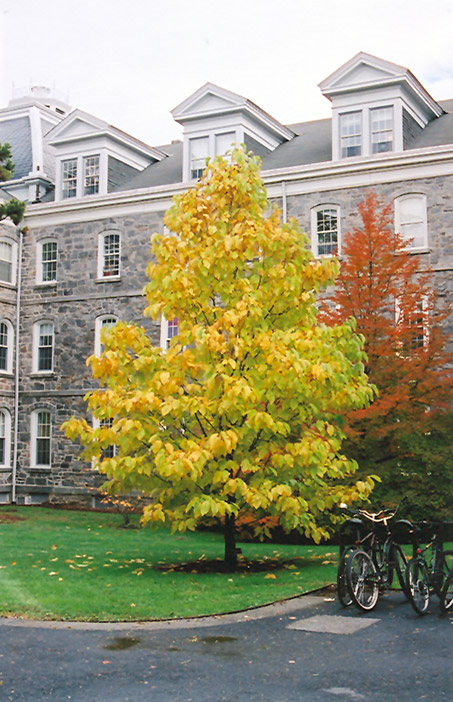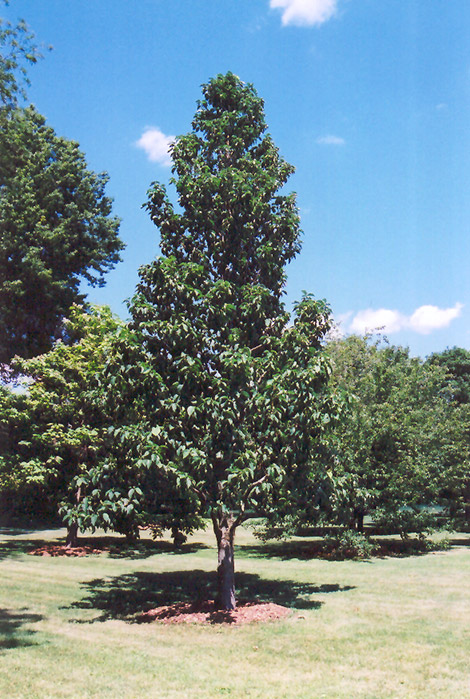Height: 50 feet
Spread: 40 feet
Sunlight:
![]()
![]()
Hardiness Zone: 4a
Description:
A tall, spreading tree with large, coarse leaves; pretty yellow flowers in June are often lost in the foliage, less showy than other magnolias; pink cucumber-like fruit in fall; very large growing, best used for larger properties and parks
Ornamental Features
Cucumber Magnolia has fragrant chartreuse cup-shaped flowers held atop the branches in mid spring, which are interesting on close inspection. It has dark green deciduous foliage. The large pointy leaves turn coppery-bronze in fall. The fruits are showy pink pods displayed in early fall.
Landscape Attributes
Cucumber Magnolia is a deciduous tree with a distinctive and refined pyramidal form. Its relatively coarse texture can be used to stand it apart from other landscape plants with finer foliage.
This is a relatively low maintenance tree, and is best pruned in late winter once the threat of extreme cold has passed. Deer don't particularly care for this plant and will usually leave it alone in favor of tastier treats. It has no significant negative characteristics.
Cucumber Magnolia is recommended for the following landscape applications;
- Shade
Planting & Growing
Cucumber Magnolia will grow to be about 50 feet tall at maturity, with a spread of 40 feet. It has a low canopy with a typical clearance of 5 feet from the ground, and should not be planted underneath power lines. It grows at a medium rate, and under ideal conditions can be expected to live for 80 years or more.
This tree does best in full sun to partial shade. It requires an evenly moist well-drained soil for optimal growth, but will die in standing water. It is not particular as to soil type, but has a definite preference for acidic soils. It is quite intolerant of urban pollution, therefore inner city or urban streetside plantings are best avoided. Consider applying a thick mulch around the root zone in winter to protect it in exposed locations or colder microclimates. This species is native to parts of North America.


